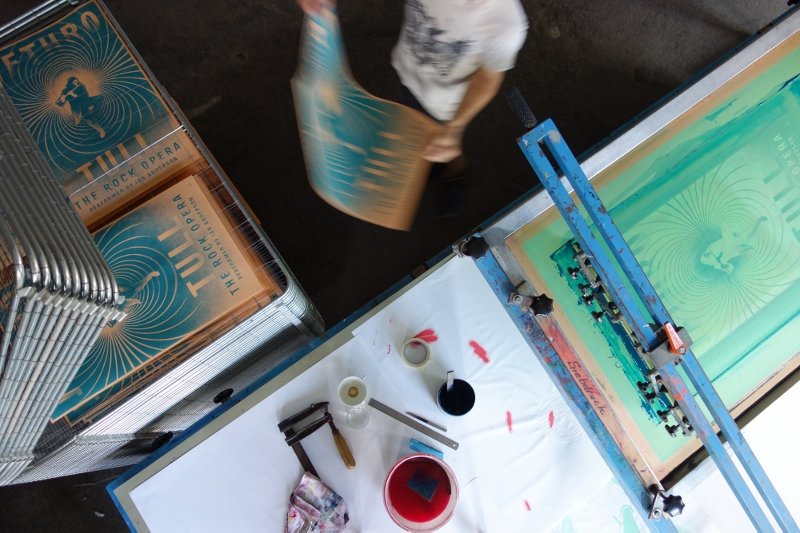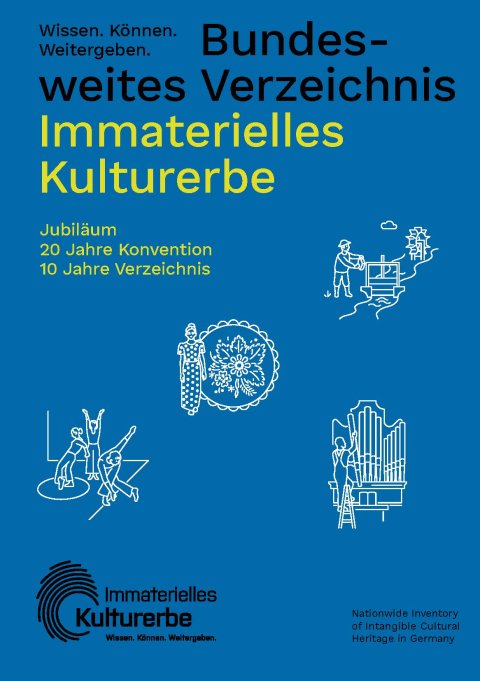Nationwide Inventory of Intangible Cultural Heritage
Artistic Printing Techniques of Relief, Gravure, Planographic, Pressure Printing and their Mixed Forms

In Germany and Europe, traditional artistic printing techniques are mainly maintained by visual artists today. Of the 60,000 artists registered with the German Artists' Social Welfare Fund, around 20,000 identified themselves as printing graphic artists based on a survey conducted by the Federal Association of Artists of the Fine Arts in 2014. Many of them own printing presses, with which they not only produce their own graphic works, but also convey technology and knowledge in the form of workshops, symposia, courses and further education, often in cooperation with museums, associations, schools, colleges of art, adult education centres and print workshops. In addition, it is primarily art teachers and museum educators, who receive, cultivate, pass on and convey the printing techniques at the aforementioned institutions.
Facts & figures
Crucial date: all seasons
Inscription: 2018
Where to find: nationwide (also abroad)
Contact
Museum für Druckkunst Leipzig
@email
www.druckkunst-museum.de
Bundesverband Bildender Künstlerinnen und Künstler
www.bbk-bundesverband.de
Printed texts and images have been part of European culture and knowledge societies for more than 500 years. In Germany, Johannes Gutenberg and Albrecht Dürer are representatives of the onset of this innovation. Gutenberg's development of movable letters around 1450 resulted in relief printing and made it possible to pass on knowledge to a high number of people. From 1500 until the end of the 18th century, copper-plate (gravure) printing and relief printing were the only media for pictorial representations. From 1800 onwards, lithography and from 1850 onwards, light printing as a new planographic printing process, with which multi-coloured reproductions were possible, added to this. Around 1900, the pressure printing process of screen printing with a laterally correct template was invented. All other methods are based on a manually produced, reversed print template.
In the middle of the 19th century, a transition from handicraft technology to industrial printing took place. Hand presses were replaced by printing machines. The artist group "Die Brücke" around 1910 or the collage art of the "Dada" movement around 1920 are undoubtedly highlights of the artistic exploration of printing techniques. This was the first step towards a democratization of art, caused by decreasing prices and therefore higher numbers of circulations which in turn reached a larger audience. With the introduction of offset printing and phototypesetting in the 1960s, as well as the shift from manual to computer-based production of templates in the 1990s, there was a definitive split-up between manual and purely industrial printed matter.
The museums for print techniques and art in Germany and Europe offer opportunities to actively engage in printing technology with a special focus on children, adolescents and students. These are, for example, the Print Art Museum in Leipzig, the Gutenberg Museum in Mainz, the Museum of Work in Hamburg, the German Newspaper Museum in Wadgassen, the Plantin Moretus Museum in Antwerp (Belgium), the Dutch Lithographic Museum in Valkenswaard, the Musée de l'imprimerie in Lyon (France) and the Tipoteca Italiana in Cornuda near Treviso (Italy). The museums have been working together on joint projects for years and are also linked internationally through sector associations and a regular exchange of information. At universities and art colleges, the history of printmaking is researched and creative use of printing techniques taught using modern technology.
For more than two decades, the number of printmaking symposia, exhibitions, courses and workshops has increased significantly in Germany. Practitioners of the art of printing techniques constantly incorporate further developments into their work. An example is the artistic typography, a mixture of text and image, which is currently on the rise. The mixture of media and techniques, such as digital printing and letterpress printing, also creates new varieties and expressions.








